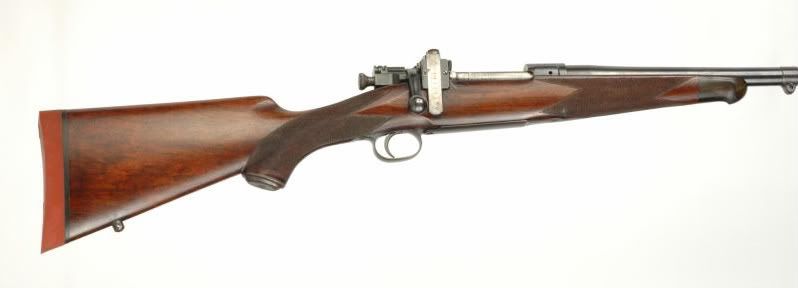There was a lot of press during WWI about the USA sending men to fight with a rifle not designed for the pressure of the modern 1906 cartridge. One of the New York papers did a big story about it and many articles were published in A&TM by famous folks telling how safe the rifles were. The problem was many recruits saw rifles blowup, actions and barrels turned into junk. These men wrote home about it and firestorm started. May I suggest you read “The Price of Carelessness” by S. Trask Arms and the Man May 4, 1918. “Down in the Small Arms Section, Engineering Bureau, the Ordnance Department in Washington there is a pile of worthless junk that was but lately nearly a score of finely finished, strongly built United States rifles.” “With receivers demolished, ruptured barrels, split stocks, and damaged bolts, they are eloquent evidence of the price the United States Government has to pay, in addition to all the other cost of waging modern war, because the soldiers to whom these rifles were issued were either careless or ignorant.”
Now if you think this is about the low-number 1903's you are mistaken, this is about the Model 1917.
The 1903 Springfield failed for the same reason the 1917 did. All the 1917 blow-ups were attribute to bore obstructions. The people who did the actual inspection on the 1903 came to the same conclusion.
Small Arms Design & Ballistics Vol. II by Townsend Whelen “All Army rifles which have been “accidentally” injured in service are shipped to Springfield Armory for examination. Mr. A.L. Woodward, Engineer of Test at the Armory for the past thirty years states that in ninety nine percent of the cases the accident has been caused by an obstruction in the bore, or by firing a wrong cartridge, that is an improper or wrongly sized cartridge, or one handloaded to excessive pressure. It is interesting to note that in the majority of these accidents an effort is made to conceal the real cause of the accident, but the evidence is always perfectly plain.”
I think that going from the single heat treat to a double heat treat was more progress than anything else. Remember the early 1903 were made from the same steel, with the same heat treatment and by the same folks that made the Krags. They realized that the actions could be built stronger so they did. There may have been a time when they considered removing the low-number guns from service but I think they all changed their minds after the 1917 was manufactured and in service for a while. There were numerous blow-ups of the 1917, and I’m not talking escaping gas but shattered receivers and barrels. One unit alone managed to destroy over a dozen rifles in a short time. The investigation of these concluded that all were a result of a bore obstruction. Interesting is that some were blamed on improper attachment of the bayonet, after the first shot the front of the bayonet became loose and dropped in front of the muzzle. (Could this happen with a 1903?) If a 1903 had a major failure the rifle was wrecked and out of service regardless of heat treatment. Another factor that may have entered into the 1903 decision was a paper published in “Army Ordnance” by A.L. Woodworth of Springfield Armory suggesting that without a bore obstruction the pressure of the 30-06 cartridge did not have enough pressure to shatter a receiver.
A couple years ago I took five (5) low number 1903's both RI and SA fitted a barrel, checked headspace. I then took Arsenal issue AP ammo and cut the cases at the head almost all the way through to guarantee case failure, I shot several in each, nothing happened. One is a ratty old RI so I got bored and fired a couple 8x57 Mauser rounds in it, nothing so I went home. I, however did not hit them with a hammer

In the end I have never found a single case of rifle blowing up in WWI or WWII combat. Remember all the problems with the Ross and the reporting that went along with it? No reports on the 1903. Has anyone ever seen or read a report of accident with low-number sporter?
Reference:
“The Bursting of Rifles in Service” by A.L. Woodworth reprinted in the American Rifleman December, 1929 does not have date of original paper.
“The Price of Carelessness” by S. Trask Arms and the Man May 4, 1918. ( Problems with the 1917)



